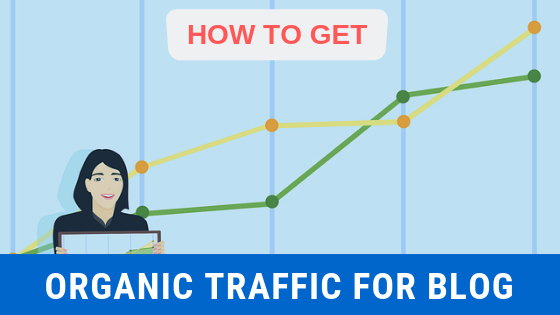Latest News
7 Ways to Get Organic Traffic to Your Blog

These days, building a blog has become very easy. However, once the website is up and running, the next significant challenge will be how to drive quality traffic to your blog. Organic traffic is one of the best ways you can use to drive quality visitors to your blog.
When your target audience searches for something and land on your blog, they are most likely to convert into clients or customers. Building this type of traffic takes a great deal of effort and time; however, you can do this effectively with proper optimization and consistent strategy. Let’s take a look at some of the ways to get organic traffic to your blog.
1. Make your Blog Search Engine Friendly
SEO is all about making sure the search engines understand your content. Make your website more search engine friendly and give them what your target audience needs. There are several aspects of SEO, some of which include On-Page SEO, Off-Page SEO, and On-site SEO. Try to start with On-Site SEO, and ensure your blog is not only indexable but also have essential parts that are crawlable by Google bits.
2. Target Long-Tail Keywords
Don’t just opt for common keywords in your niche. Use keywords that are more specific to your service or product. Google and other search engines in time will identify your blog as the right place for those subjects, which in turn boost your content in the search rankings, and help your audience find you. Studies show that long-tail keywords drive more results due to less competition and higher relevancy.
3. Invest in Backlink Strategy
When you produce engaging, high-quality content, other publications, and companies are more likely to link to your blog. Links from reputable sites are one of the factors Google considers for ranking your blog higher than those of your competitors. So, it is crucial to invest in strategies to generate links from high-quality sites.
You can do this in many ways – directory submissions, blog comments, guest blogging, etc. Click here for a few ideas on how to get you started. The critical thing to remember is that Google will likely flag any hacky or automated link building strategies. So, find a genuine way to generate more high-quality links.
4. Optimize your blog for mobile and load speed
The days, when online browsing was done exclusively on desktops, are long gone. According to recent statistics, nearly 60 percent of search queries come from mobile devices. And if your blog visitors find it difficult to navigate through your blog, you are telling them to go elsewhere.
Moreover, Google seriously considers mobile-friendliness and load speed as part of their ranking algorithm. So, for these reasons and more, it is important that when building your website, you invest in a reliable web hosting provider that can offer fast loading speed and make sure it is designed to be mobile-friendly. The great news is that Black Friday is coming and there’s going to be a lot of great deals on hosting during this period of the year. So, grab yourself a reputable hosting such as HostGator or BlueHost, and you’re good to go.
5. Write Consistently
There are no best times and days to publish a blog post. If you are serious about getting organic traffic, try to write consistently. Ideally, the more you write, the better results you get. But this can be quite difficult if you are also running a business. So, try to post content at least once a week.
Google and other search engines prefer blogs that are updated frequently. Moreover, a regularly updated blog keeps your audience coming back for more. They also tend to link your blogs and content.
6. Get Active on Social Media
Sharing content through social channels are not enough; you also need to participate in the community actively. Social media is one of the best ways to promote your services or product and people are more likely to trust you or your product when their family or friends recommend something to them.
Google understands this, and that is why social media shared content is one of their ranking signals. So, also make sure your content is sharable.
7. Study Your Analytics Data
One of the most instrumental sources of data that you can use for just about every area of your website is Google Analytics, from the visitor demographics to your most popular pages. So, monitor your analytics data and use the information to optimize your blog and content strategies. For instance, pay close attention to what pages and posts that are proving the most popular. Also, check your visitor data to see how, when, and the origin of the traffic.
Addison is a student of the Aust Abbottabad University of Science and Technology. He started his graduation in 2016 and graduated in 2020. I’m a professional article and blog writer, has written dozens of content on different topics and worked with professionals all over the globe. Feel free to contact me for any assistance. [email protected]










